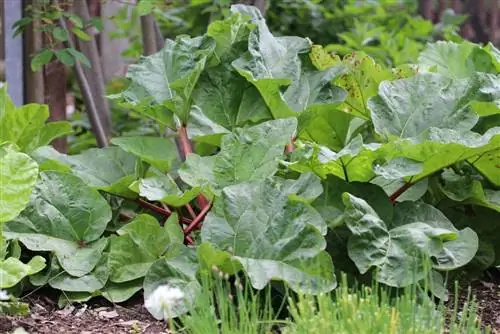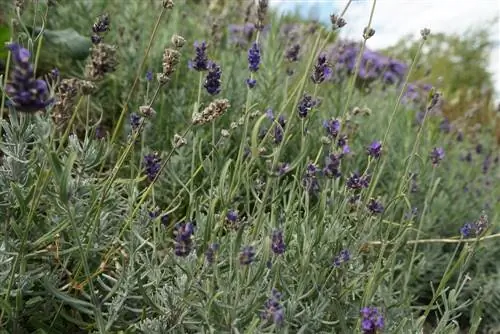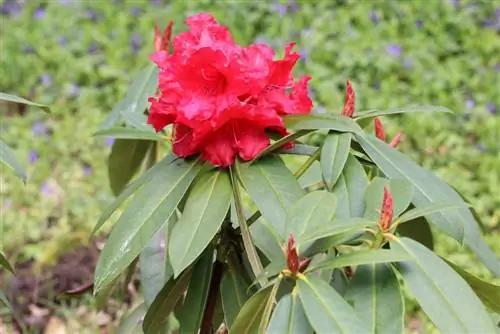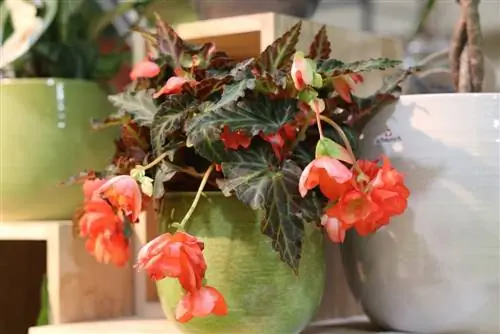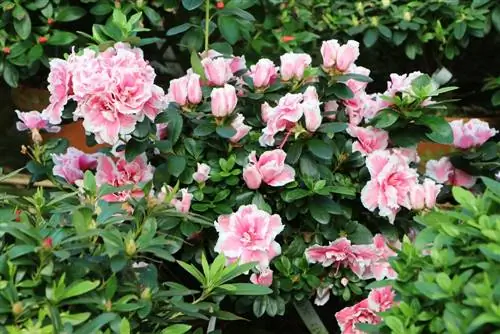- Author admin [email protected].
- Public 2023-12-17 03:39.
- Last modified 2025-01-24 12:45.
While vegetables are usually grown as annuals, rhubarb is a permanent crop. It becomes more powerful every year and delivers ever higher yields, provided the location is right.
Criteria for choosing a location
Light conditions
Rhubarb (Rheum rhabarbarum), like asparagus and strawberries, is a typical spring vegetable. Not only is it delicious, but it is also very he althy thanks to its high content of vitamin C and fiber. The ideal vegetable for a spring cure. The conditions at each location are crucial for successful cultivation. The common, common, vegetable or curly rhubarb is a real sun worshipper. Accordingly, it prefers sunny, warm and wind-protected locations where it finds the best conditions in suitable soil. If necessary, it also thrives in partial shade, but then only produces relatively thin stems. Of course, the best possible yields not only require optimal lighting conditions, but also a soil condition that meets the plant's requirements.
Soil texture
In its natural habitat, rhubarb thrives on moist, humus- and nutrient-rich soil. In order to do justice to this in the garden, the soil should first be prepared accordingly by digging deeply and thoroughly removing all root weeds. Now it's about the quality or condition of the soil.
- Rhubarb needs deep, fresh, medium-heavy and humus-rich soil
- Should be able to store water well
- Waterlogged surfaces unsuitable
- Soil should be free of harmful nematodes (roundworms)
- Best suited for soils with a pH value between 5, 6 and 7, 2
- Loamy-sandy substrates are very good
- Incorporate plenty of leaf humus into sandy soil to increase storage capacity
- Enrichment with compost or manure often makes sense
- Approx. three liters of compost and three handfuls of horn shavings per square meter
- Improve especially loamy soils with sand or fine gravel
- Cultivation on plowed meadows is particularly promising
- After planting, cover area with composted bark
Tip:
Rhubarb is one of the so-called heavy eaters, i.e. i.e., he has an increased nutrient requirement. For this reason, planting in the immediate vicinity of a compost heap would be recommended, as this is where the soil is most nutrient-rich.
Relocation and space requirements
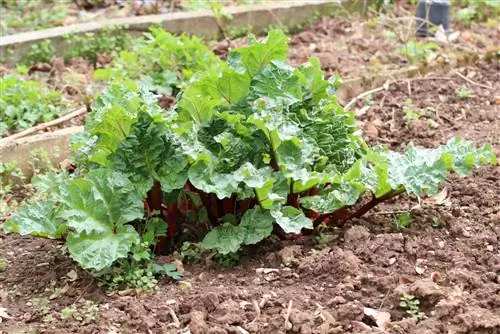
Since this vegetable is a permanent crop, i.e. a perennial crop, it should be able to spread undisturbed over the years. The proximity to other vegetables is not a problem, as rhubarb gets along very well with many types. However, it should not remain in one and the same place in the garden indefinitely.
- Grow rhubarb in the same location after at least five years
- After 8-10 years at the latest, change location and share stock
- Share the plant if necessary
- Rheum rhabarbarum requires sufficient space due to its size
- Minimum for smaller varieties, one square meter of area per plant
- Better for larger 130 x 130 cm
- Good neighbors are bush beans, peas, cabbage, lamb's lettuce, spinach, kohlrabi, broccoli
Tip:
Only the red or green stems, depending on the variety, are suitable for consumption, although red-fleshed varieties are particularly aromatic and contain significantly less oxalic acid. Rhubarb should not be eaten raw, only prepared appropriately.

